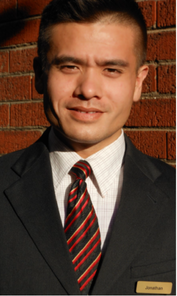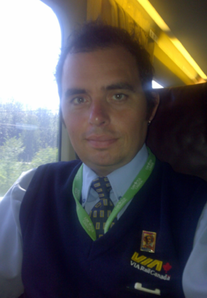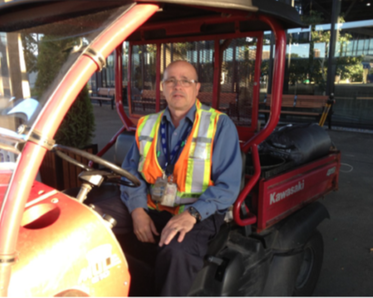Working Together - Health & Safety at VIA Rail
November 1, 2013
Article originally published in the July/August 2013 issue of the CAW Health, Safety & Environment Newsletter
Health and safety committees in Canada are a joint venture of the employer and the representatives of the employees. The goal is to improve health and safety in the work place. Their activities are intended to be carried out together, working as equal partners, as directed in the Canada Labour Code, during regular working hours.
In many work places, managers are so occupied with their many duties that they are unable to achieve all of their tasks as expeditiously as we would like them to. However, the fact that they are busy does not diminish their responsibility, which range from accident investigations, to handling of employee complaints, inspections, hazard identification and developing recommendations for the employer’s attention.
When there is work to be done to which the busy manager cannot attend, we may wish but cannot easily expect the employer to hire additional managers. But we can expect that we be allowed to help. This is a practical solution, as the time of the employee representative is a flexible resource, available as required, as when a relief supervisor is temporarily promoted from the ranks as needed.
Doing this well requires a high level of mutual confidence between employee and employer members. The employee representative can carry out many of the tasks with the knowledge of the employer, leading to a joint success. The alternative is to wait. And wait.
Some committees are already employing this approach, including the policy health and safety committee at VIA Rail, of which I am the employee chair. There are currently three areas that I am working on which includes a management person and a work place committee member:
In this process, I work closely with each employee, meeting weekly for a couple of hours by telephone. We review an extensive reading list together and one of us will produce a document at the end of the process. The management person does not attend all of the calls, but comes in at key points, and is included in all emails, as they have to support the final result. This ensures that at the end of the process there will be management buy-in.
This works for me as I prefer to work with others than by myself like a monk. It is recognition of their abilities to the employees who have been selected to participate. It ensures input and perspective from the work places. I would like to tell you about each of them and what we are doing.
Health and safety committees in Canada are a joint venture of the employer and the representatives of the employees. The goal is to improve health and safety in the work place. Their activities are intended to be carried out together, working as equal partners, as directed in the Canada Labour Code, during regular working hours.
In many work places, managers are so occupied with their many duties that they are unable to achieve all of their tasks as expeditiously as we would like them to. However, the fact that they are busy does not diminish their responsibility, which range from accident investigations, to handling of employee complaints, inspections, hazard identification and developing recommendations for the employer’s attention.
When there is work to be done to which the busy manager cannot attend, we may wish but cannot easily expect the employer to hire additional managers. But we can expect that we be allowed to help. This is a practical solution, as the time of the employee representative is a flexible resource, available as required, as when a relief supervisor is temporarily promoted from the ranks as needed.
Doing this well requires a high level of mutual confidence between employee and employer members. The employee representative can carry out many of the tasks with the knowledge of the employer, leading to a joint success. The alternative is to wait. And wait.
Some committees are already employing this approach, including the policy health and safety committee at VIA Rail, of which I am the employee chair. There are currently three areas that I am working on which includes a management person and a work place committee member:
- Accident investigation
- Violence prevention in the work place
- The work refusal process
In this process, I work closely with each employee, meeting weekly for a couple of hours by telephone. We review an extensive reading list together and one of us will produce a document at the end of the process. The management person does not attend all of the calls, but comes in at key points, and is included in all emails, as they have to support the final result. This ensures that at the end of the process there will be management buy-in.
This works for me as I prefer to work with others than by myself like a monk. It is recognition of their abilities to the employees who have been selected to participate. It ensures input and perspective from the work places. I would like to tell you about each of them and what we are doing.
|
Daniel Dion (left) is an on-train employee who has worked out of Winnipeg and now Toronto, where he is currently the chair of the work place health and safety committee. We are working with the employer to conduct the mandatory triennial review of the employer’s violence prevention program, and the implementation of any missing elements in it. Together we are reviewing related documentation. He is jointly carrying out with his management counterpart a survey of employees and interviews with stakeholders in the work places to gather the necessary information.
|
Elwin Carson (above right photo) is an equipment maintenance employee, servicing rolling stock, at Ottawa Station. He is also his local lodge president and safety committee chair. A new safety talk is needed at VIA Rail on how to make a work refusal, as a result of many misunderstandings about the process. We are reviewing the legislation, appeal board and arbitration decisions, government pamphlets, to thoroughly understanding the topic. The safety talk will explain how and when to make a refusal, as well as answering particular questions that may arise, in the form of a FAQ (frequently asked questions).

Committees will then be required to master the subject so that they may carry out their role when a refusal occurs. Working with his management counterpart they will field-test the Talk at their location after it is developed.
Jonathan Chan (left) is an on-train employee out of Toronto, and local chair for his collective agreement. We are working with a management person from head office to improve accident investigations of work place committees so that root causes are identified and corrective actions recommended and implemented. This is not so easily done when you have twenty committees across Canada, with different ways of working! The plan is for each committee to have at least one pair of “champions”, or local experts on each committee. Jon will be the first one, and will coach two local committees in his city, Toronto, work which both the management person and I would be challenged by time and distance to do. The document he is preparing, based on our review of all laws, procedures and numerous expert reports will form the knowledge content for future champions.
If you find that there is too much to do and not enough time in a day to do it, consider this shared approach. It is more satisfying and effective than working alone.
Article by Ken Cameron, National Health and Safety Coordinator, Unifor Council 4000
Jonathan Chan (left) is an on-train employee out of Toronto, and local chair for his collective agreement. We are working with a management person from head office to improve accident investigations of work place committees so that root causes are identified and corrective actions recommended and implemented. This is not so easily done when you have twenty committees across Canada, with different ways of working! The plan is for each committee to have at least one pair of “champions”, or local experts on each committee. Jon will be the first one, and will coach two local committees in his city, Toronto, work which both the management person and I would be challenged by time and distance to do. The document he is preparing, based on our review of all laws, procedures and numerous expert reports will form the knowledge content for future champions.
If you find that there is too much to do and not enough time in a day to do it, consider this shared approach. It is more satisfying and effective than working alone.
Article by Ken Cameron, National Health and Safety Coordinator, Unifor Council 4000



